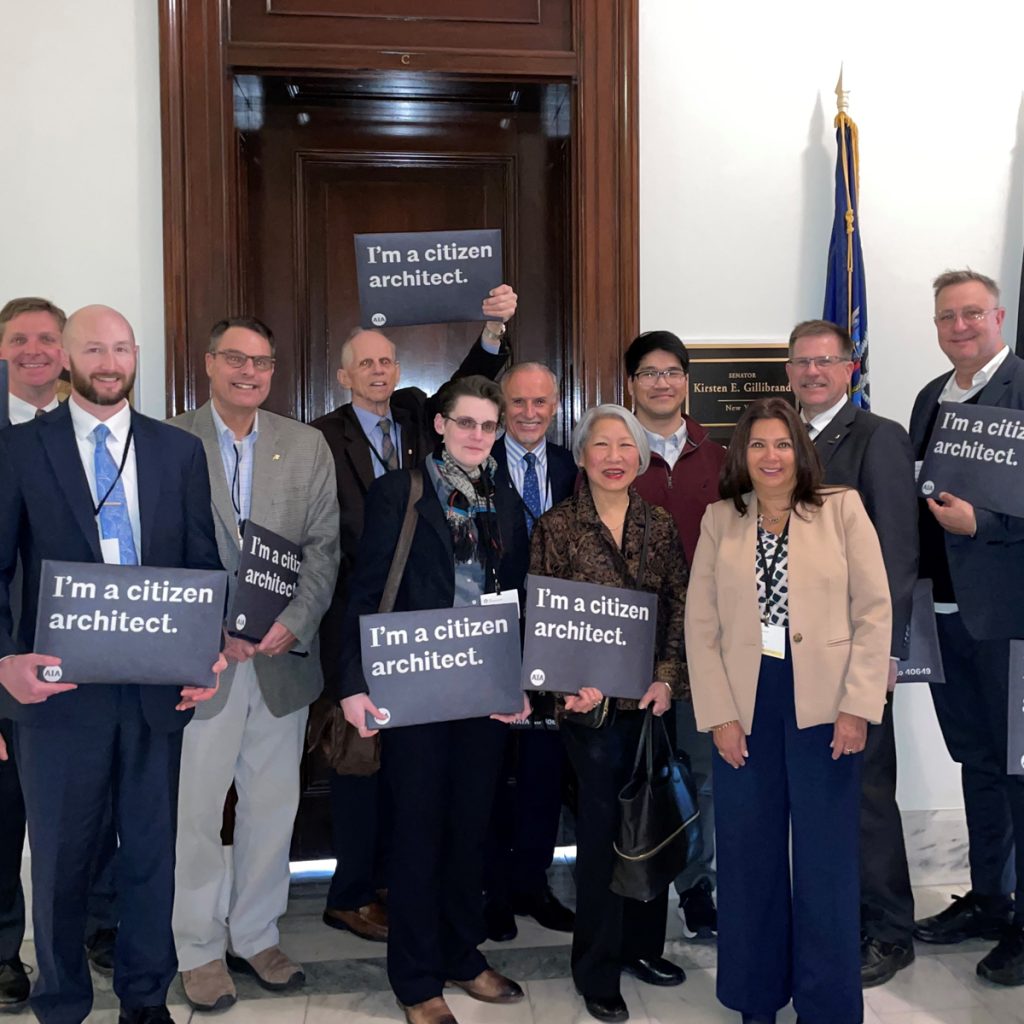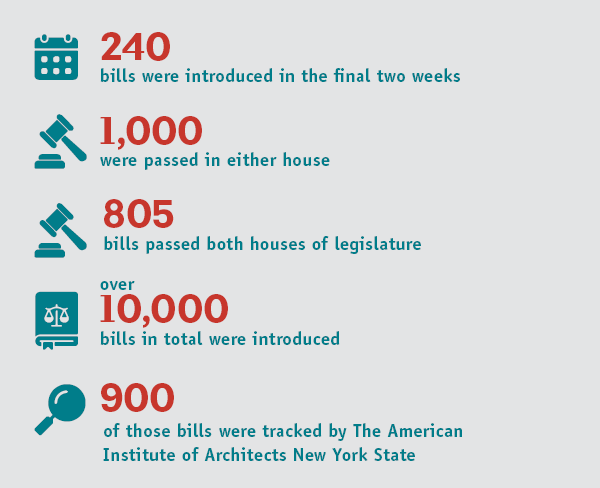Government Advocacy Priorities

National and state leaders develop government advocacy priorities using member surveys and policy networks, like AIA’s State and Local Government Network (SLGN). Additionally, the AIA Government & Community Relations Staff collaborate with component staff and volunteer leaders to identify policy trends affecting the profession nationwide. They share knowledge and best practices for addressing issues proactively and reactively.
State and local governments pass the laws and policies that most directly impact architectural practice. Thus, state components like AIANYS play a crucial role in successful advocacy efforts. While AIA provides valuable information and direction, AIANYS uses this information to drive positive policy changes and defend against harmful proposals.
AIANYS focuses on advocacy efforts in areas such as:
- Practice Encroachment
- Tort Reform
- Regulation of the Profession
- Enforcement of Licensing Laws
- Project Delivery
- Procurement/Qualifications-Based Selection (QBS)
- Sustainability/Resiliency/Disaster Assistance
- Building codes
- Historic Preservation/Rehabilitation
- Taxes
Government Advocacy Benefits

Membership with AIANYS equips the organization to be a credible voice in Albany and city halls statewide. Furthermore, lobbying is essential for any successful organization, especially in New York, where hundreds of millions of dollars are spent on lobbying each year. Opponents of our priorities, like tort reform, invest millions annually in lobbying and political campaign contributions to maintain the status quo. Consequently, without engagement, the architecture profession risks marginalization.
Additionally, the AIANYS Vice President for Government Advocacy, Executive Vice President, and Director of Government Affairs collaborate with leadership and a contracted lobbyist to execute the annual Legislative Program. The Government Advocacy Committee develops the Legislative Program, which the Board of Directors approves in January each year. Beyond legislative advocacy, AIANYS facilitates leadership discussions with State agencies through the Public Sector Practice Committee. Furthermore, the Executive Vice President and staff work to build and expand relationships within the design and construction industry and with organizations outside the industry that advocate for aligned issues.
Ultimately, government advocacy aims to equip you with the tools needed to make a meaningful impact. Founded by architects in New York City in 1857, AIA continues to be the credible voice of the architecture profession, with your help, well into the future.
2024 Legislative Session Round-Up

The end of this year’s Legislative Session in Albany was characterized by frenetic activity and the usual friction created by the push-and-pull of lawmakers and special interests to get their priorities across the finish line. 240 bills were introduced in the final two weeks and around 1,000 were passed in either house. From that number, some 600 same-as bills passed both houses, which means they will be sent to the governor for an approval or veto.
Over the course of the entire Session, 805 bills passed both houses of legislature. Meaning, 75% of the bills requiring action by the governor passed during the last two weeks. To date only 17% of the bills passing both houses have been approved or vetoed by the governor.
Over 10,000 bills in total were introduced in the Assembly and Senate over the two-year legislative cycle, which will be renewed in January of 2025. The American Institute of Architects New York State tracked around 900 of those bills which had either a direct or indirect impact on business and profession of architecture, or an impact on the design and construction industry.
